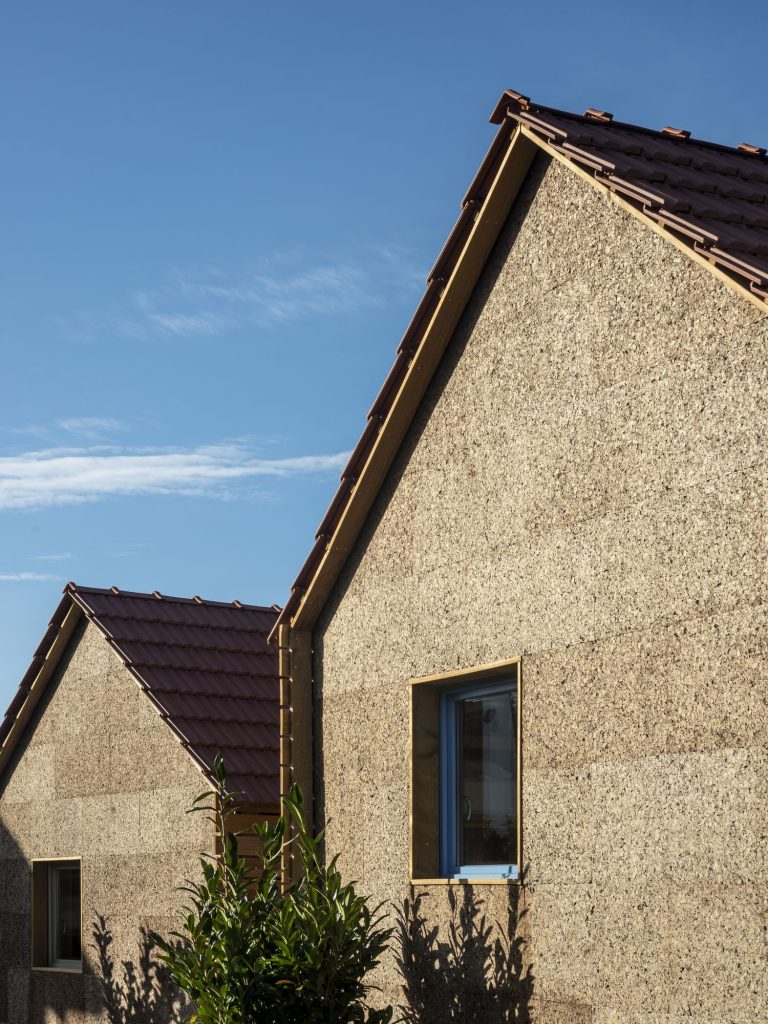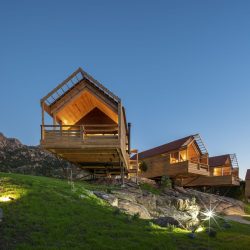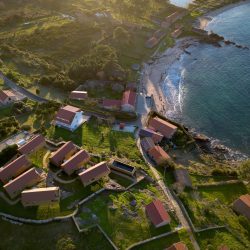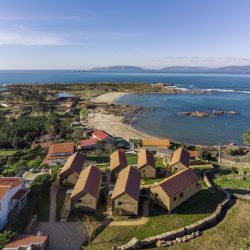
Salgado e Liñares Arquitectos . photos: © Héctor Santos-Díez
The Celtic Olympus, the granitic mountain range of Monte Pindo, contemplates the sea from the heights, the sea at the end of the world, and the horizon, that every dusk reddens and hides the sun, to the darkness, that every day renews…
The granitic boulders descend to the sea and peak from time to time… until at last they concentrate at the natural harbor of Quilmas, shelter from the Iron Age, and habitat since then.
This natural enclave points at the rest stop, the protected space that allows to peak at the sea. And the buildings graze the environment, like stranded boats that accommodate along the terrain.
The vegetal cover over the granitic canvas, very irregular, gave form to a shapeless ensemble of fisher huts, something like a living organism that responded to contact between one another, building the habitat with granite, like if everything cameo out of the land, almost at the edge of the sea to nurture from it…
With time, this old shelters with gable roof and of precise scale were complemented with residences that have different materials and shapes… but the place held on to the scale, and that´s what saved it.
Our fundamental question refers us to the origins of Architecture, to its first steps, maybe to its essence: ¿how do we build the horizontal plane?
And we choose to raise it up above the granitic boulders that descend to the sea.
The rest is an echo of the previous shelters, that now raise to look at the horizon, that every dusk reddens, and the night arrives, and the day renews…
_
El Olimpo Celta, el macizo granítico del Monte Pindo, contempla el mar desde las alturas, el mar del fin del mundo, y el horizonte, que cada atardecer enrojece y esconde el sol, hasta las tinieblas, que cada día se renuevan… Los bolos graníticos descienden hacia el mar y asoman de tanto en tanto… hasta que por fin se concentran en el puerto natural de Quilmas, refugio de la Edad de Hierro, y hábitat desde entonces. Este enclave natural señala el punto de descanso, el lugar protegido que permite asomarse al mar. Y las construcciones pespuntean el entorno, como barcas varadas que se acomodan sobre el terreno. El manto vegetal sobre el lienzo granítico, muy irregular, conformó un conjunto informe de casetas de pescadores, algo así como un organismo vivo que actuase por contacto, construyendo el hábitat con granito, como si todo saliese del interior de la tierra, casi al borde del mar para servirse de él... Con el tiempo, estos viejos refugios de cubierta a dos aguas y de escala precisa, se vieron complementadas por nuevas viviendas con otros materiales y otras formas… pero el lugar conservó su escala, y esto le salvó. Nuestra `pregunta fundamental remite a los orígenes de la Arquitectura, a sus primeros pasos, tal vez a su esencia: ¿cómo establecemos el plano horizontal? Y decidimos sobre elevarlo sobre los bolos graníticos que descienden al mar. El resto es un eco de las primeras casetas, que ahora se elevan para mirar al horizonte, que cada atardecer enrojece, y llega la noche, y se renueva el día…




















